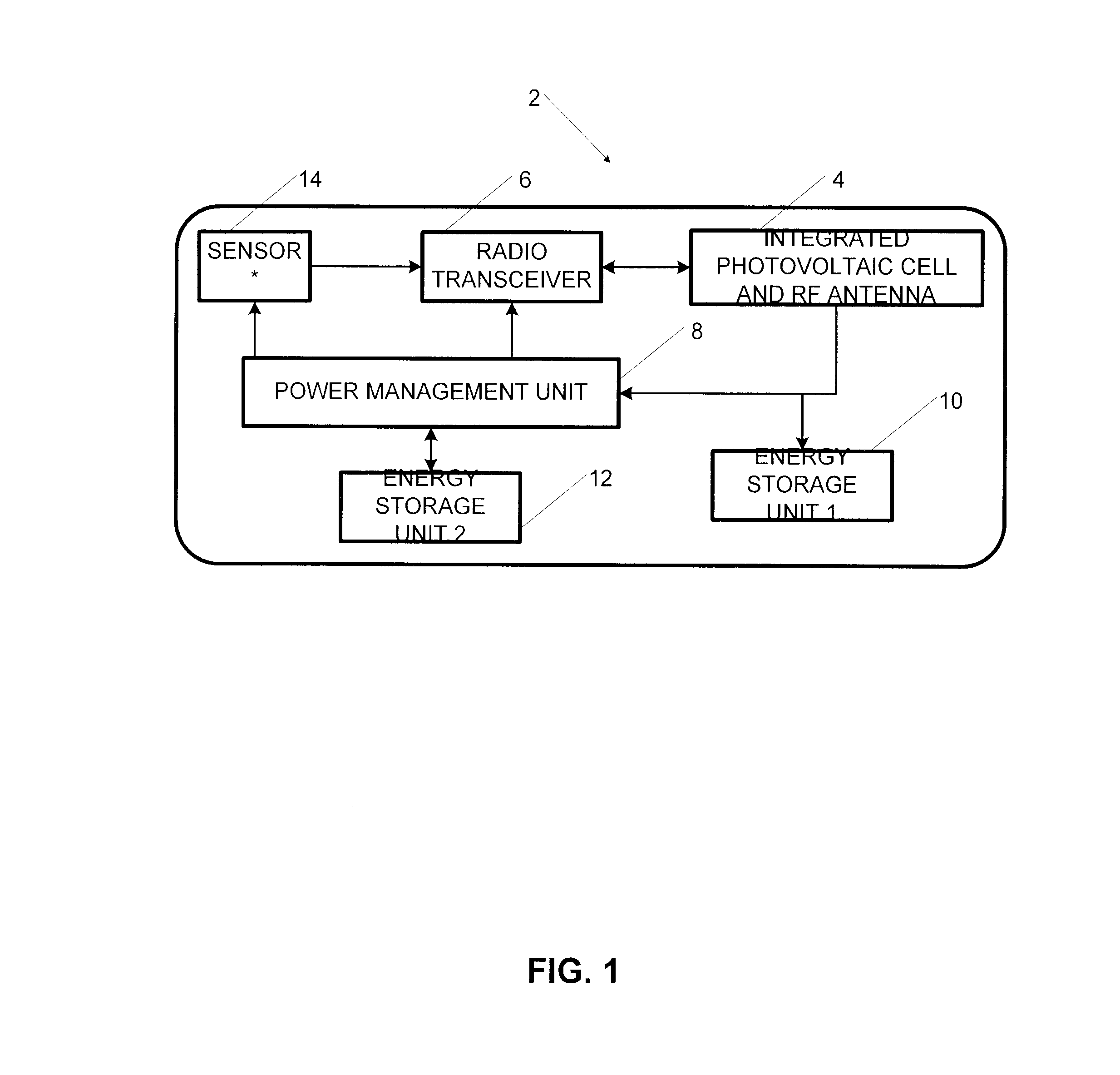Integrated photovoltaic cell and radio-frequency antenna
a photovoltaic cell and radio frequency technology, applied in the direction of antennas, photovoltaic energy generation, radiating elements structural forms, etc., can solve the problems of increasing the cost and size of the wireless module, surpassing the cost of the electronic integrated circuit, and achieving the effect of maximum solar or low cos
- Summary
- Abstract
- Description
- Claims
- Application Information
AI Technical Summary
Benefits of technology
Problems solved by technology
Method used
Image
Examples
Embodiment Construction
[0086]In the following description of the embodiments, references to the accompanying drawings are by way of illustration of an example by which the invention may be practiced. It will be understood that other embodiments may be made without departing from the scope of the invention disclosed.
[0087]A wireless autonomous transceiver 2 using light or solar energy harvesting is shown in FIG. 1. The wireless autonomous transceiver 2 comprises an integrated photovoltaic cell and radio-frequency (RF) antenna assembly 4, a radio transceiver 6, a power management unit 8, a first optional energy storage 10, a second optional energy storage 12 and an optional sensor 14.
[0088]The integrated photovoltaic cell and RF antenna assembly 4 acts as an RF antenna and as a DC energy generator and interfaces with the radio transceiver 6, the power management unit 8, and optionally the energy storage unit 10 or several energy storage units 10, 12. In the case of wireless sensor network (WSN) applications...
PUM
 Login to View More
Login to View More Abstract
Description
Claims
Application Information
 Login to View More
Login to View More - R&D
- Intellectual Property
- Life Sciences
- Materials
- Tech Scout
- Unparalleled Data Quality
- Higher Quality Content
- 60% Fewer Hallucinations
Browse by: Latest US Patents, China's latest patents, Technical Efficacy Thesaurus, Application Domain, Technology Topic, Popular Technical Reports.
© 2025 PatSnap. All rights reserved.Legal|Privacy policy|Modern Slavery Act Transparency Statement|Sitemap|About US| Contact US: help@patsnap.com



